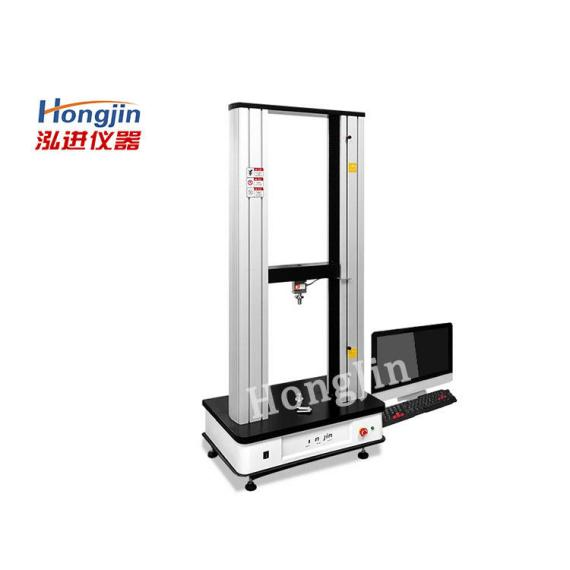
The electronic universal testing machine is mainly suitable for testing metal and non-metallic materials, such as rubber, plastic, wires and cables, fiber optic cables, safety belts, belt composite materials, plastic profiles, waterproof rolls, steel pipes, copper profiles, spring steel, bearing steel, stainless steel (such as high hardness steel), castings, steel plates, steel strips, and non-ferrous metal wires in terms of tension, compression, bending, cutting, peeling, tearing Two point extension (requiring an extensometer) and other tests. This machine adopts an electromechanical integrated design, mainly composed of force sensors, transmitters, microprocessors, load driving mechanisms, computers, and color inkjet printers. It has a wide and accurate loading speed and force measurement range, and has high accuracy and sensitivity in measuring and controlling loads and displacements. It can also perform automatic control experiments for constant loading and constant displacement. The floor standing model, styling, and painting fully consider the relevant principles of modern industrial design and ergonomics.
Dongguan Hongjin Testing Instrument Co., Ltd.was founded in June 2007 It is a high-tech manufacturing company that specializes in the design and automatic control of large-scale non-standard testing equipment like simulated environmental testing, material mechanics testing, optical dimension measurement, vibration impact stress testing, new energy physics testing, product sealing testing, and so on! We serve our customers with the utmost passion, adhering to the company concept of "quality first, honesty first, committed to innovation, and sincere service," as well as the quality principle of "striving for excellence."
Precautions for installing fixtures for electronic universal testing machines:
Fixtures are an indispensable part of tensile testing machines. Tensile testing machines use fixtures to hold specimens, and use force application devices, force value display devices, and recording devices to determine whether materials are qualified and meet predetermined performance indicators. Without available fixtures, these cannot be determined. The fixture is a part of the tensile testing machine that frequently changes according to the changes in the material sample. Different materials require different fixtures, and the fixture is an important factor in whether the test can be carried out smoothly and the accuracy of the test results. Due to the fact that the tensile testing machine can test the performance of various products, and the different structures and appearances of various specimens, the particularity of the fixture structure is formed. Therefore, the reasonable and correct use of the fixture is conducive to the smooth progress of the test.
1. The correct clamping of the sample is crucial for the test, as it directly affects the success or failure of the test and the accuracy of the test data;
2. For rectangular and brittle specimens, clamping is more important;
3. When clamping, try to install the sample in parallel as much as possible before stretching it;
4. In steel wire winding fixtures, there should be no wire compression, as this can cause local pressure concentration and often lead to breakage at the compression point, resulting in poor breakpoints;
5. For wedge-shaped fixtures, the left and right alignment of the specimen is ensured by the fixture, but it is prone to tilting before and after installation. During the stretching process after tilting, the force on both sides of the specimen is uneven, which may tear the specimen or result in poor breakpoints;
1. For overlapping specimens, the overlapping surface should pass through the force center of the sensor.
Precautions for operating an electronic universal testing machine:
1.Before starting the testing machine, it is necessary to check the position of the limit knob to ensure that it meets the requirements of the test stroke and does not cause collisions between the upper and lower fixtures. The limit switch installed on the middle crossbeam moves together with the middle crossbeam.
2.When placing the specimen, it is necessary to place it at least two-thirds of the length of the jaws in order to effectively grip and protect the jaws.
3. When clamping the extensometer, pay attention to placing adjustment shims and handle them gently to protect the extensometer blade. Do not pull the wires.
4.During the experiment, pay attention to immediately remove the extensometer according to the software prompts to prevent it from being damaged by excessive deformation or sample fracture.
Post time: Jan-10-2024
